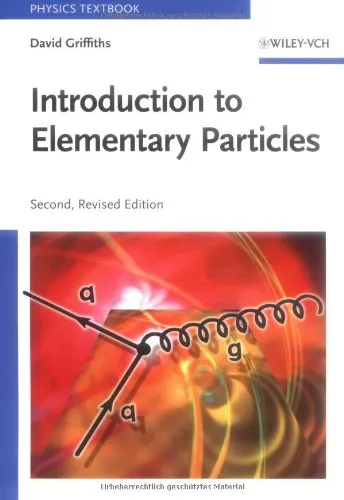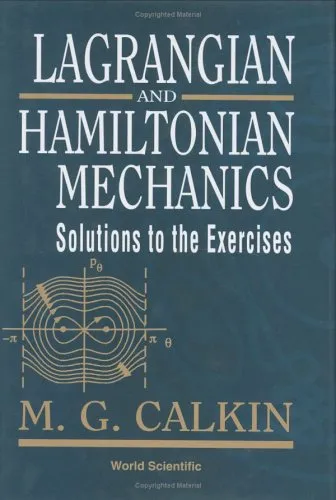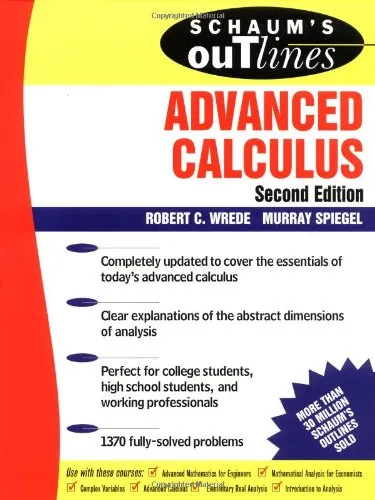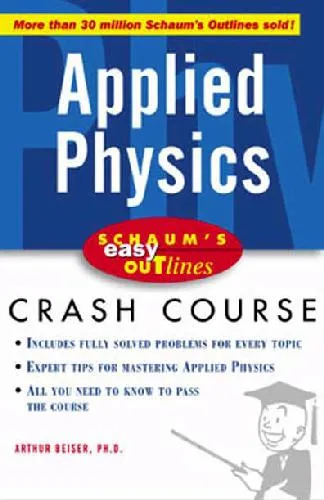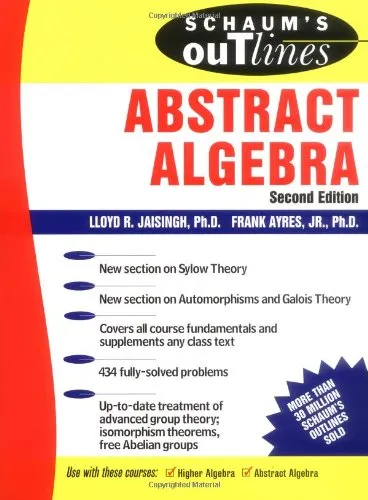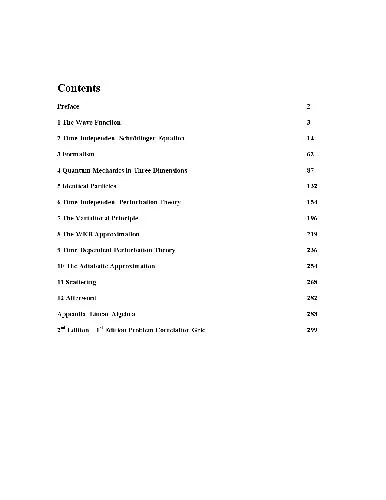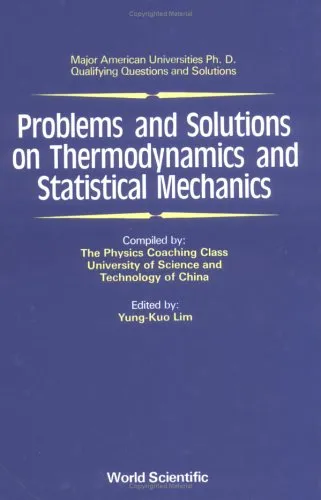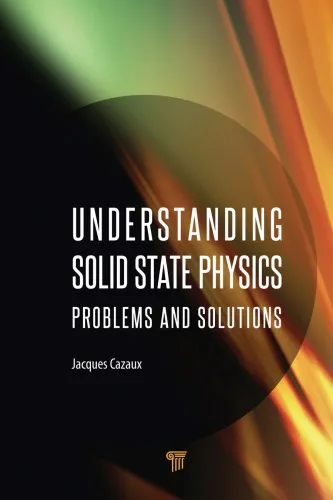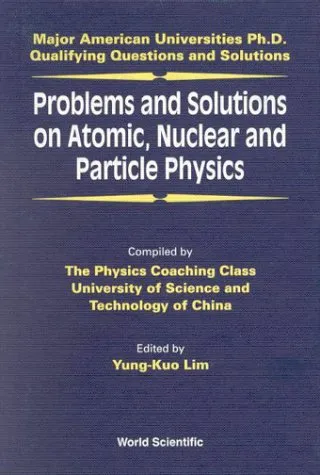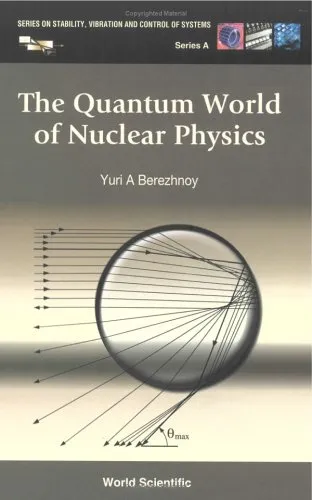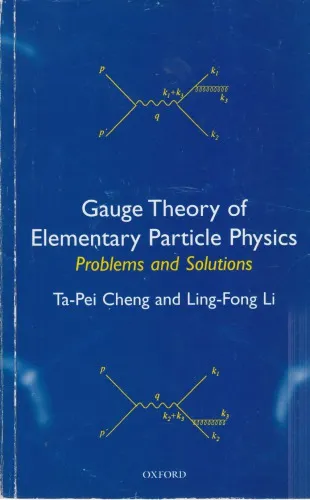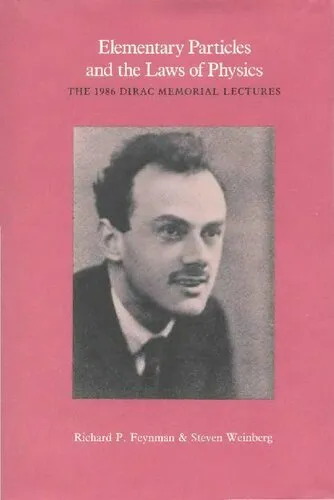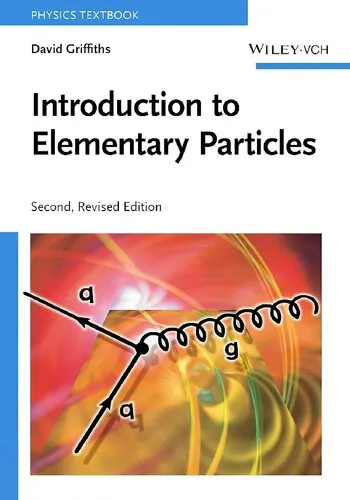Solution manual for Introduction to Elementary Particles
4.5
Reviews from our users

You Can Ask your questions from this book's AI after Login
Each download or ask from book AI costs 2 points. To earn more free points, please visit the Points Guide Page and complete some valuable actions.Related Refrences:
Introduction to the Solution Manual for 'Introduction to Elementary Particles'
Welcome to the solution manual for the acclaimed textbook Introduction to Elementary Particles by David J. Griffiths—an indispensable companion for mastering the challenging yet fascinating world of particle physics. This solution manual has been meticulously created to assist students, educators, and self-learners in unlocking the fundamentals of particle physics, providing detailed and methodical solutions to problems presented in the textbook. By bridging the gap between theoretical concepts and their practical applications, this manual enhances the journey of learning this subject and makes it accessible to those venturing into modern physics.
Elementary particles form the cornerstone of our understanding of the universe, and the study of particle physics reveals the fundamental workings of nature. This solution manual not only equips readers to approach problems analytically but also deepens their grasp of the core principles that drive the behavior and interactions of particles. Whether you are a student preparing for an exam, a professor needing additional teaching material, or an independent learner enthusiastic about exploring this field, this book has been specially designed to make learning both structured and intuitive.
Detailed Summary of the Book
The Solution Manual for Introduction to Elementary Particles addresses every problem presented in David J. Griffiths' textbook. It breaks down even the most complex questions into manageable steps, providing detailed explanations, derivations, and numerical answers. Each chapter reflects the corresponding sections of the main textbook, starting from fundamental concepts such as quantum field theories, symmetries, and conservation laws, to advanced topics like gauge theories, the Standard Model, and particle interactions.
The solution process in this manual emphasizes understanding rather than rote memorization, guiding readers in thinking critically about physical phenomena. Additionally, worked examples provide opportunities to familiarize oneself with mathematical techniques such as group theory, Feynman diagrams, and Lagrangian formalism—all key tools in modern particle physics. Alongside pure problem-solving, the manual offers explanatory notes to point out nuances, pitfalls, and deeper insights into the physics behind each problem.
Key Takeaways
- Develop a profound understanding of fundamental particle physics principles, including quantum mechanics, symmetries, and conservation laws.
- Enhance problem-solving and analytical skills by working through detailed, step-by-step solutions.
- Gain insight into advanced methods such as perturbation theory, Feynman rules, and Lagrangian symmetries.
- Use the manual as a supplementary resource to master the topics covered in the main textbook more effectively.
- Build confidence in handling complex mathematical computations and algebraic manipulations in theoretical contexts.
Famous Quotes from the Book
"The framework of particle physics is our best attempt yet to describe the universe at the smallest scales." — David J. Griffiths
"No calculation in particle physics is perfect, but that doesn't mean it isn't worth doing."
"With every unsolved problem, the universe reminds us of its complexity, and of our own curiosity."
Why This Book Matters
Particle physics remains one of the most compelling areas of modern science. It connects theory to empirical observation, tests the limits of the Standard Model, and lays the foundation for breakthroughs in cosmology, quantum computing, and beyond. Understanding this field requires not only intellectual curiosity but also the availability of resources to learn—even from one’s mistakes.
The Solution Manual for Introduction to Elementary Particles goes beyond merely providing answers—it serves as a companion guide that makes particle physics comprehensible and engaging for learners at all levels. By taking the time to explain concepts in parallel with solving intricate problems, it transforms what might seem like an intimidating subject into an achievable academic pursuit. The book is a testament to the belief that accessible and well-structured resources can inspire a new generation of physicists, mathematicians, and scholars of the natural world.
Free Direct Download
You Can Download this book after Login
Accessing books through legal platforms and public libraries not only supports the rights of authors and publishers but also contributes to the sustainability of reading culture. Before downloading, please take a moment to consider these options.
Find this book on other platforms:
WorldCat helps you find books in libraries worldwide.
See ratings, reviews, and discussions on Goodreads.
Find and buy rare or used books on AbeBooks.
1402
بازدید4.5
امتیاز0
نظر98%
رضایتReviews:
4.5
Based on 0 users review
Questions & Answers
Ask questions about this book or help others by answering
No questions yet. Be the first to ask!
